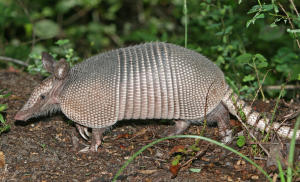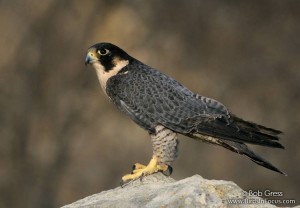By Jim Mason
Naturalist
Great Plains NatureCenter
Citizen of Kansas
A quick glance at the list of animal species in decline within the state of Kansas reveals that dangerously large percentages of those animals most closely tied to water habitats are in trouble. According to the most recent accounting available:
Mussels: 31 out of 48 (64%) 8 Extirpated, 7 Endangered, 4 Threatened, 12 SINC
Amphibians: 12 out of 29 (40%) 3 Endangered, 7 Threatened, 2 SINC
Fish: 47 out of 144 (32%) 5 Endangered, 13 Threatened, 29 SINC
For the fish, the indications are now that 2 species are extirpated from the state.
These figures should be a wakeup call to all of us that our stewardship of Kansas’ surface waters is seriously lacking. Preservation and restoration of water quality and baseline stream flow regimens is essential for survival of aquatic species, and ultimately, ourselves also. These creatures are the “canary in the coal mine” that we should be paying attention to. If we can succeed in returning these various species to a healthy population level, we will be doing ourselves a favor too.
Agriculture accounts for more than 80% of water usage in the state, and as the major player in the game, the involvement of the agricultural sector is critical to the success of any attempt to address the three big problems identified in the 50 Year Vision process: water quantity shortages in the western half of the state, water quality problems in the eastern half and reservoir sedimentation. I applaud the efforts of the Vision Team to seek a realistic way forward, and I also applaud Governor Brownback for elevating this discussion within the state. Unfortunately, Kansas has a long history of giving overriding priority to consumptive use of water, to the extent that sometimes I wonder that any water leaves the state at all.
Small streams and long reaches of some rivers have disappeared from the western half of the state because the Ogallala has been emptied to the extent that it no longer supports those streams and rivers. We are mining the aquifer and exporting it as pork and fat beef. Over the last 30 years I have watched as the cottonwood trees along the Arkansas River in western Kansas have died. When there isn’t enough ground moisture to keep a riverbank cottonwood going, you know things are getting serious. And this is not just a matter of keeping trees and minnows and frogs alive. Many farmers who were not fortunate enough to be situated over the “fat” part of the aquifer have already given up irrigation because either their part of the aquifer is just plain gone, or they can no longer pump the water at a reasonable cost. There is no equally profitable agricultural paradigm they can transition to. Will the rest of the irrigators just keep drawing the aquifer down until every producer is out of business? Where do the municipalities get their water at that point? You cannot have cities without a water supply for the people living in them. Every year that this situation goes on unchanged, we get closer and closer to creating the Buffalo Commons. And no nefarious government body is responsible; we are doing this to ourselves.
Regarding water quality, I believe the Clean Water Act set a very reasonable, common-sense standard: Surface waters should be fishable and swimmable. You should be able to go fishing at a stream, river or lake and find a diverse and healthy population of fish that are safe to eat. And you should be able to jump into the local swimming hole and not worry about being exposed to toxic chemicals or catching a debilitating disease. I think those are goals every Kansan would see as desirable. I hope we can all agree to make them attainable as well. We have come a long ways from the bad old days of the 1970s when the CWA was passed. Point sources of pollution have largely been taken care of.
What remains is to address non-point sources, and, again, agriculture must be involved to reach those goals. It is to every producer’s advantage to fully implement Best Management Practices on their land. Every ton of topsoil that washes off a crop field is a blow to the farmer’s main capital resource. And every pound of fertilizer or chemical that does not stay where it was applied is a waste of the farmer’s money, reducing the profitability of their operation. It only makes sense to keep the soil, fertilizer and chemicals in place and not let them get away.
Reservoirs will inevitably silt in over time. Each river, particularly in a state like ours, will carry suspended material in the water column and when that water slows down, in an impoundment for instance, that material will fall out. However, there is a reason why El Dorado Lake is in much better shape in that regard than so many of our other lakes, namely most of its watershed is in the Flint Hills and the topsoil is anchored by a continuous cover of prairie grasses and forbs. This is instructive for how we can make progress and reduce the sedimentation going forward. We must do all we can to keep topsoil on the land and not allow it to be stolen from farmers by erosion. I know there are numerous cost share programs and advisory capabilities among the different state and federal agencies to help producers get this done, and I hope more can be done to augment these programs and increase participation in them by producers.
I hope I have demonstrated that when I speak out for protection of aquatic species of wildlife, I am not ignoring theKansas economy or the future of the people who live here and their descendants. It’s all part of one piece. Critters need water, and people are critters too. I hope the 50 Year Vision that comes out of the current planning effort recognizes the importance of water to maintain all the living creatures that inhabit this state. It’s a matter of enlightened self interest to do so.
Editor’s Note: Jim submitted the above comments to the Governor’s Water Vision Team as recommendations regarding the 50-Year Vision. The Kansas Water Office has scheduled 12 meetings in mid-July to collect input into the first draft for theVision for the Future of Water in Kansas. You can attend and provide your input. See the locations and dates for the meetings in another article in this newsletter.
Water Vision Tour Locations Announced
Team leaders to share first draft of the 50-Year Vision the week of July 7-11 on statewide tour
Twelve locations throughout the state have been set for Governor Sam Brownback’s Water Vision Team to visit and receive input on the first draft of the Vision for the Future of Water in Kansas.
“To date the Team has attended more than 160 meetings with more than 9,000 Kansans to gather input on what should be addressed in this Water Vision,” said Tracy Streeter, Kansas Water Office Director. “It is so important that all water users have a chance to share their comments on this first draft as this could be a turning point for addressing our state’s water issues.”
The input sessions will be held July 7-11, 2014 at the following locations:
Monday, July 7 – Wichita, St. John
Tuesday, July 8 – Liberal, Garden City, Dighton
Wednesday, July 9 – Colby, Stockton, Assaria
Thursday, July 10 – Manhattan, Washington, Kansas City
Friday, July 11 – Ft.Scott
For a detailed list of the addresses and times for each stop on the Vision Tour, visit:http://www..kwo.org/50_Year_Vision/50_Year_Vision.htm.




